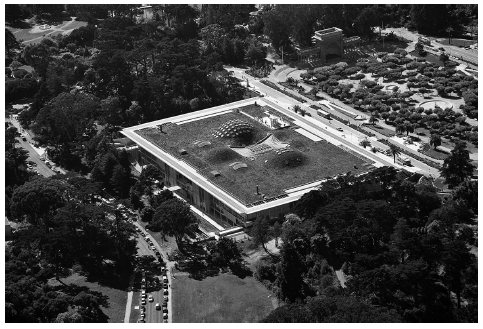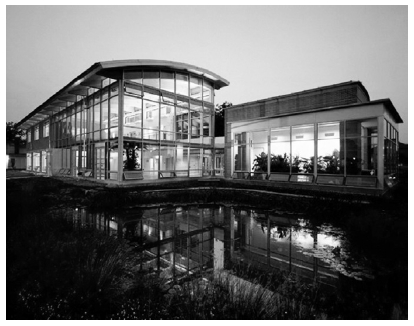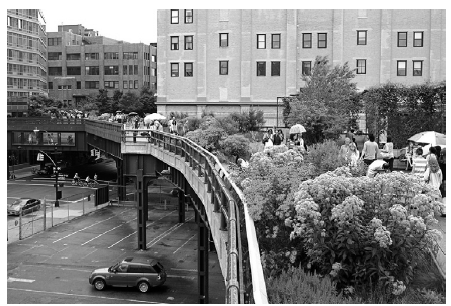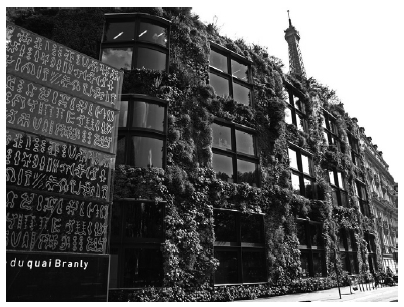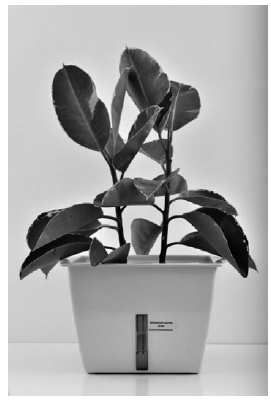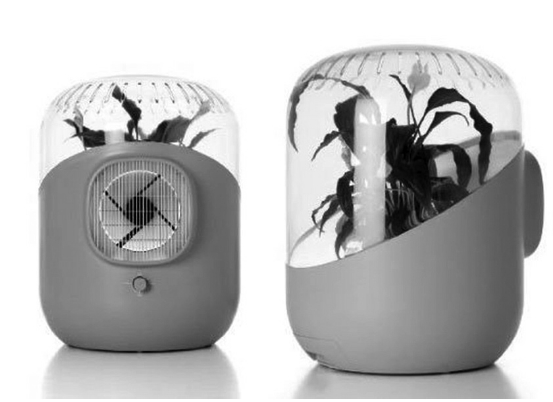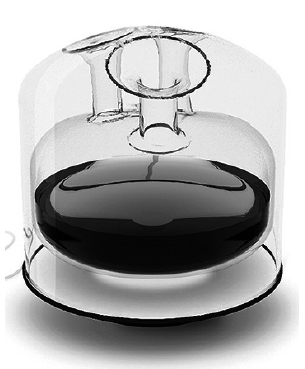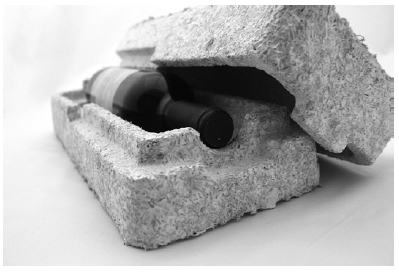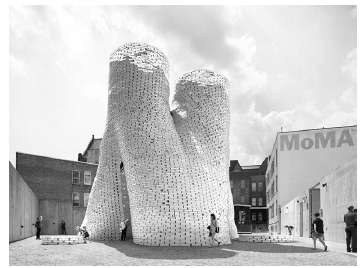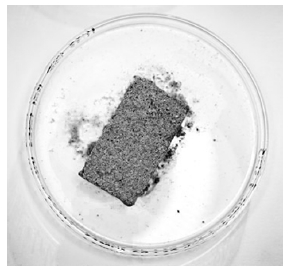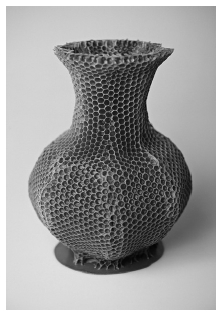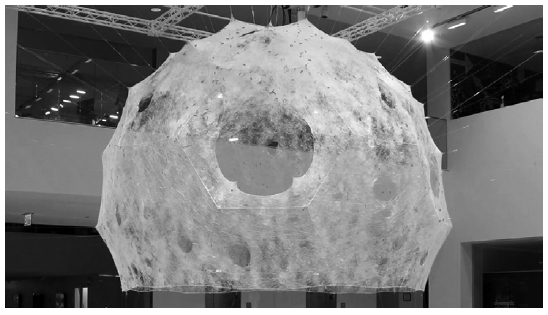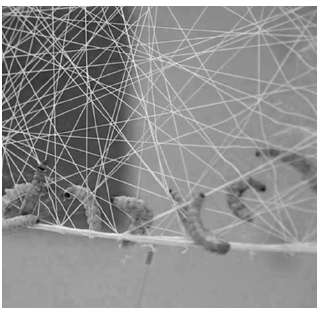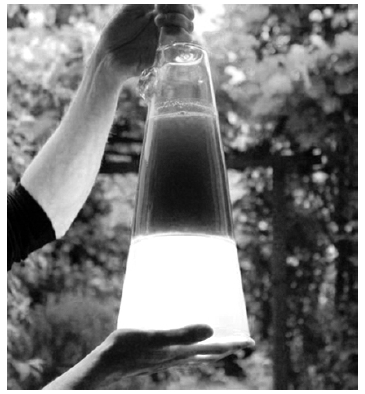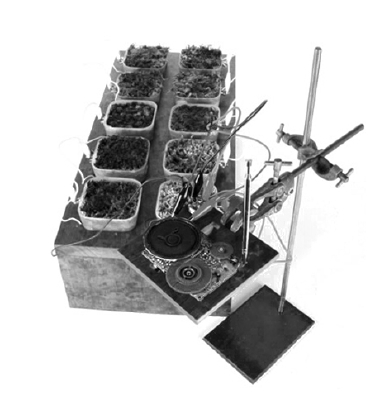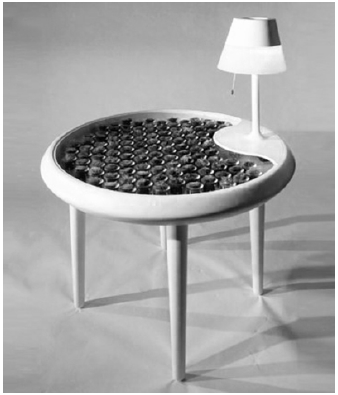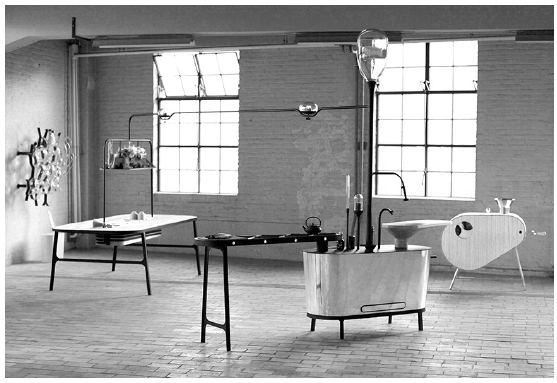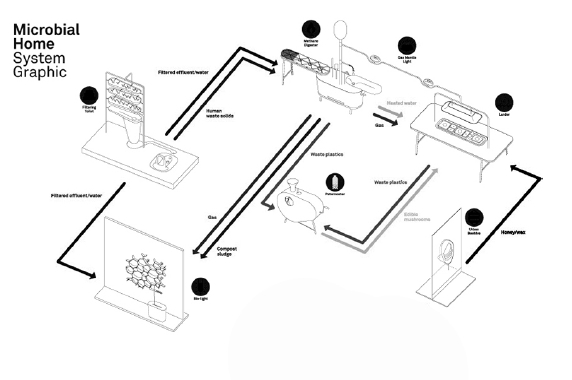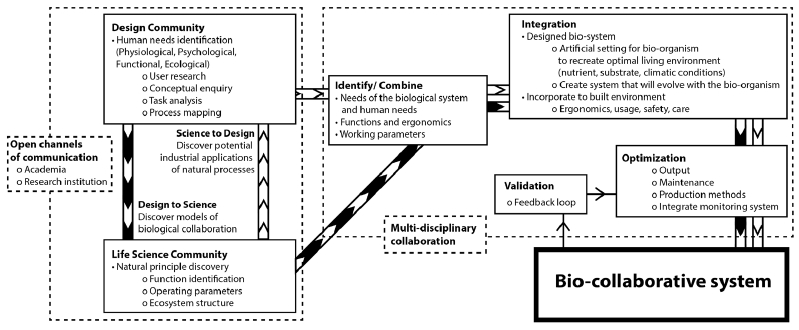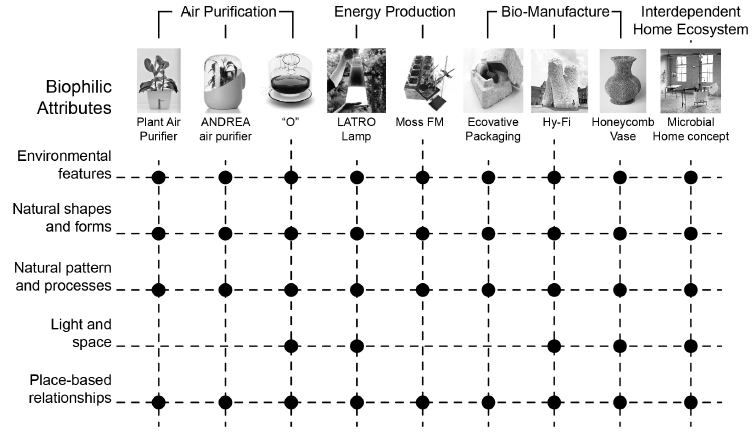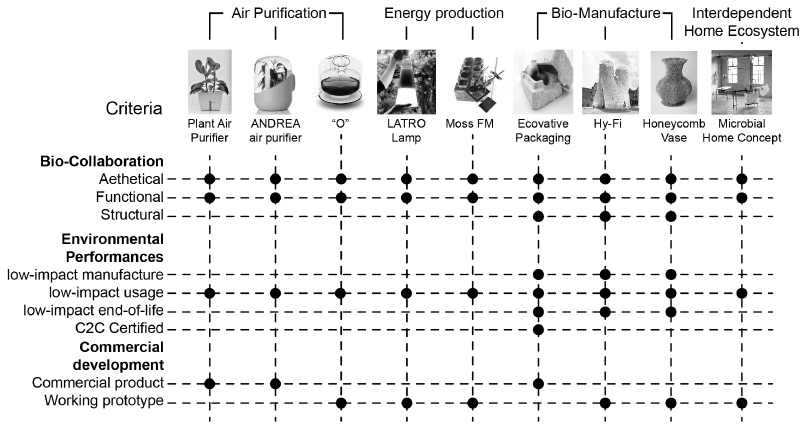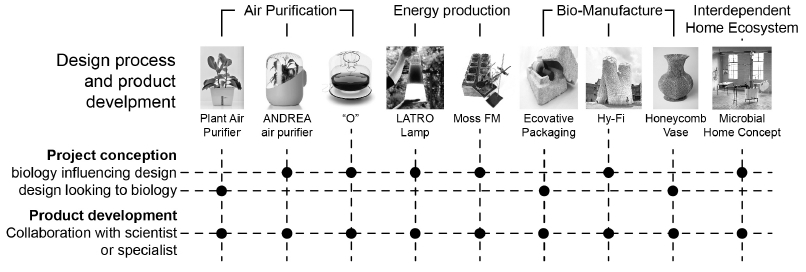
Biophilic Design and Bio-Collaboration: Applications and Implications in the Field of Industrial Design
Background Growing concerns on environmental degradation are urging the design communities to drastically re-evaluate our approach to the production and delivery of goods and services in order to be more socially and ecologically responsible. Among the numerous efforts of promoting sustainable progress, biophilic design - which encourages the integration of nature into our built environment as a strategy to re-establish a strong connection between humans and their natural environment as well as to improve human health and well-being - has played a significant role in the recent green architecture movement and sustainable urban development. While incorporating biophilia, the innate human need for nature, into design has been quite actively implemented by several leading architects and city planners, its potential applications in the production of mainstream industrial goods have been relatively unexplored so far.
Methods This paper examines the concept of biophilia and its relevance as a design strategy offering integrated solutions to our social, cultural, and ecological challenges. In discussing this close link between human and nature, recent scientific evidence supporting the physiological and psychological human needs for nature are examined; in particular, focusing on the positive influence that natural settings and live organisms have on our health, work productivity and living conditions. In addition, practical applications of biophilic design elements and attributes are analyzed through several examples of architectural and urban constructions; and current biophilic design cases within the field of industrial design are assessed as an indicator for future application.
Results Various research findings in environmental science and environmental psychology highlight the value of natural processes and the benefits of the biophilic design approach on human psychological and physiological well-being. Growing scientific evidence provides critical insights for possible improvement of current sustainable design strategies: solutions transitioning from mainly focusing on minimizing the negative impact on environment to embracing nature’s system and their ability to enhance the quality of human experience and well-being, and replace or complement common techniques for the production of goods and services.
Conclusion Expanding upon current definitions of sustainable design, biophilic design methodology demonstrates the potential as a sustainable design strategy allowing the design community to overcome the current superficiality of greening trends. However, as current examples of biophilic design are yet relatively limited, the conceptual framework for potential industrial design applications is to be more clearly defined through further investigations. In order to support the development of this new design strategy, multi-disciplinary collaborations between the scientific community and professional designers should be encouraged as well as integrated within the industrial design curriculum.
Keywords:
Biophilic Design, Biophilia, Sustainable Design Strategy, Bio-Collaboration, Bio-inspired Design1. Introduction
Sustainable development has become one of the predominant global concerns in recent years, as many of us are increasingly becoming aware and informed of the ecological and social challenges humanity will face in the near future. However, despite the institutional, political, and economical sectors’ apparent high level of interests, strategies to counteract unsustainable methods of production and consumption have not been widely implemented; bringing the effectiveness of the current methods into question. Although sustainable development and appropriate design movements may have led various discourses on improving human health and general living conditions, these solutions have focused mostly on minimizing the negative impact on environment and society, rather than embracing nature’s often overlooked ability to enhance the quality of human experience and well-being. Expanding upon recent development of sustainable design strategies, biophilic design introduces new critical insights and clues to the debate, and proposes itself as a comprehensive design strategy bearing the promise of unprecedented level of well-being for both human civilization and the natural world.
1. 1. Biophilia
The term ‘biophilia’ takes its origin in social psychologist Erich Fromm’s seminal book The Heart of Man (1964). In an addendum known as The Humanist Credo, Fromm writes:
“I believe that the man choosing progress can find a new unity through the development of all his human forces, which are produced in three orientations. These can be presented separately or together: biophilia, love for humanity and nature, and independence and freedom.”
20 years later, Harvard biologist Edward O. Wilson popularized the word with his book titled Biophilia(1984), postulating an innate human affiliation with nature; which he describes as "the connections that human beings subconsciously seek with the rest of life.”(Kellert & Wilson, 1993) This deceivingly romantic and apparently obvious concept conceals complex and universal human needs, and growing scientific evidence confirms how the interaction between human and nature is closely linked to our physical, psychological, and cognitive health and well-being.
2. Biophilic Design: Research and Application in the Field of Architecture and Urban Design
While most of us intuitively recognize the positive effects of being bathed in natural light and surrounded by natural landscape, there has been until recently very little scientific proof of those benefits. Various experiments have now been conducted by environmental scientists, psychologists and economists, and shed new light on the multiple benefits of environment that incorporates biophilic elements and attributes such as: natural light, exposure to fresh air, natural building ventilation, exposure to clean water, interaction with nature, animal and plant biodiversity, natural landscape, open green spaces, sense of spaciousness, sense of safety/refuge, natural sensory stimulation, natural colors and textures, natural shapes and forms (biomorphism), local materials, vernacular design, sense of place/locality.
2. 1. Particularities of Biophilic Design Approach
In the field of architecture, the integration of biophilic attributes to our built environment - such as the use of natural light, biomorphism, or the addition of plants - might not appear new at first sight, as nature has been a source of inspiration for architects and designers since ancient times. However, what sets a new wave of architects and urban designers apart from their predecessors is their ability to go beyond the aesthetic or symbolic use of natural elements in order to create buildings that truly connect with the surrounding natural environment.
Comparing to today’s prevalent attitude to sustainability, the particularity of biophilic design approach lies in the desire for greater level of collaboration between human and nature, rather than an inconsiderate exploitation of natural systems and resources. Based on the recognition of our own physiological and psychological needs as biological beings, biophilic design shows the possibility of harnessing the power of natural systems through direct collaboration with bio-organism. If this approach can indeed benefit both human and nature simultaneously, this methodological transition from exploitation to collaboration does also offer greater integration of human dwellings within the local environment, and allows the preservation of indigenous ecosystems.
Many leading architects, besides seeking the help of engineers and material scientist, now also regularly request assistance from biologists, psychologists, meteorologists, and an expanding range of environment researchers in orders to achieve greater level of sustainability. The increasing integration of this extensive scientific knowledge has allowed architects to create buildings that integrate and take advantage of the ability of the natural systems to provide wide-ranging services that are integral to solving today’s major ecological concerns. These applications include water treatment, water polishing, thermal and acoustic insulation, deciduous shading, rainwater collection, air scrubbing, evaporative cooling, humidification and structural support among others.
One of the well-known examples of such methodology is the New California Academy of Science Museum by Renzo Piano (Figure 1). Based on a growing understanding of natural systems, this building became the first American museum and one of the largest building in the world to be awarded a double platinum LEED certification for its use of ecological materials and of biophilic elements. Both the design and the functional systems of this innovative building are an example of how this leading public education institution is capable of inciting greater appreciation for the natural world. Built on the ground of the old academy building, which had to be replaced after it sustained major structural damages from the 1989 Loma Prieta earthquake, its design emulates the surrounding hills allowing this large 37,000 square meter structure to seamlessly integrate with its surroundings. This project was hailed by the New York Times as "a specimen case, a framework for pondering the natural world while straining to disturb it as little as possible”(Ouroussoff, 2008) for its use of recycled building material, its comprehensive recycling scheme (up to 65% of the waste is recycled or composted), the extensive availability of natural light (over 90% of the building), and the impressive vegetated roof covering an area of 1 hectare, built in collaboration with renowned ecological design firm Rana Creek, which contributes to the excellent thermal insulation of the building and its ability to recycle rainwater.
Another example of integrated biophilic approach to the built environment is the Adam Joseph Lewis Center for Environmental Studies at Oberlin College in Ohio (Figure 2). Internationally renowned for his Cradle-to-Cradle (C2C) approach to design, the lead architect William McDonough and partners envisioned the Lewis Center "to be as bountiful and effective as a tree." The building integrates many innovative systems minimizing its energy usage; for instance, a vegetated wetland ecosystem surrounding the building that purifies wastewater to be reused for irrigation and sanitation, and a passive air circulation system achieving level of performances, reliability and comfort that exceed those of conventional man-made technologies.
Those are but a few examples of an ever increasing number of built structures aiming at promoting and fashioning a new type of symbiotic relationship between human civilization and the bionetwork. Through their efforts to improve energy efficiency and to provide "building and landscape design that enhances human physical and mental well-being by fostering positive connections between people and nature” (Kellert, Heerwagen, & Mador, 2008), biophilic design adepts are progressively extending their influence and offering new solutions to the development of a truly sustainable human habitat.
2. 2. Scientific Evidence Supporting the Benefits of Biophilic Environment
Contemporary researches in environmental science and psychology, measuring the impact of human contact with the natural environment, have revealed many benefits to reincorporating nature within the built environment. Multiple studies show that even limited contact with nature or slight modifications to existing buildings such as introducing plants or offering a view of a natural landscape can have noticeable positive effects on human health and well-being. Moreover, advocates of a biophilic design approach claim that incorporating biophilic elements into our living environment can result in substantial financial benefits; to illustrate, in 2012, environmental design consultancy Terrapin Bright Green released a peer reviewed white paper entitled The Economics of Biophilia that encourages businesses and communities to apply biophilic design strategies by highlighting social and economical benefits, such as increased property values, enhanced workers’ productivity, improved public health, phytoremediation of industrial ruins, and potential reduction in violence and crime (2012).
Over the last 30 years, a growing number of studies have focused on finding the connections between nature and human health. The conclusion of those researches all appear to indicate that coordinated contact with nature does positively influence human health and psyche, in particular within the context of healthcare facilities. In his well-known study, Roger Ulrich analyzed the influence of environmental factors on 46 patients recovering from gallbladder surgery (1983). According to this research, patients who were given a room with an unobstructed view of the trees surrounding the hospital required fewer analgesics, complained less about discomforts such as nausea or headaches; had faster post-surgical recovery time; and were more satisfied with the hospital personnel, compared to the other group of patients whose window faced a wall. These behavioral responses to environmental factors provide significant markers for the positive influences that biophilic environment can offer to patients’ recovery and general human well-being.
Nowadays, an increasing number of clinical facilities and therapeutic services recognize the benefits of incorporating biophilic elements into their new and existing care facilities. One such instance is the Khoo Teck Puat Hospital in Yisun, Singapore (Figure 3), whose ubiquitous use of natural elements contributes to patients’ recovery. This health institution integrates multiple biophilic features including an extensive use of natural light, natural air circulation, view of natural scenery and wild life, vegetable roof garden, rain water usage, solar heated water, and natural sound of water and birds.
Several studies in the 1990s have investigated the relationship between worker productivity and exposure to nature, particularly the effects of introducing indoor plants in the workplace. For instance, a study by Rachel Kaplan investigating 615 office workers uncovered that performance level and job satisfaction were higher in the workplaces that provided views of natural elements. Likewise, a study led by Virginia Lohr, from the Dept. of Horticulture and Landscape Architecture, Washington State University, displayed similar results. For one of her study, professor Lohr observed separate groups of individuals working in windowless environment; both tasks and environments were similar for all participants to the exception of a few potted plants strategically placed in sight of half the test subjects. The result of this study led to the conclusion that the introduction of plants in work environments can result in a substantial increase of workers productivity, improved cognitive functioning and concentration level, and a reduction of stress level (elevated mood, lower blood pressure) compared to the control group with no access to nature (Lohr, Pearson-Mims, & Goodwin, 1996, p.97-100). Furthermore, other biophilic elements such as access to daylight in addition to plants were also examined by Dr. Tøve Fjeld from the Agricultural University of Norway; his several studies outlined additional physical benefits such as decreased fatigue and headaches, as well as skin and respiratory improvement (2002). Similar physiological, psychological as well as cognitive benefits can also be observed in educational environments; related studies in California have highlighted improvement in students’ academic performances including an increased ability to concentrate and interact, enhanced cognitive functioning, reduced symptoms of attention deficit disorder, reduced absenteeism and decreased aggressivity (Heschong, Wright, & Okura, 2002, p.101-111).
Reintegrating nature back into our urban living environment has become an important issue over the past decades with the world’s growing urban population, the extent of environmental degradation, and the challenges posed by climate change. The future ecological role of cities will be evidently critical. Considering that many modern urban environments are largely devoid of nature, major cities around the globe are increasingly trying to integrate biophilic measures in their urban planning and design in order to restore and manage natural systems’ complex ability for climate adaptation, flood protection, pollution reduction, sustainable food and energy production, biodiversity; and also for improved quality of life and well-being of the public through healthier lifestyle and neighborhood.
These efforts towards greening the urban infrastructure can be implemented through large and small scale adaptations of the city environment such as: the addition of green roofs to buildings, urban agriculture, the increase and restoration of parks and vegetation areas, car free zone, green parking, revitalization of regional hydrologic system, downspout disconnection, rainwater harvesting, and permeable paving; each providing cost effective structural and cultural services to urban areas. The use of plant for acoustics, humidification, water polishing, or evaporative cooling are increasingly becoming facilitated, and ecologically responsible private ventures such as urban beekeeping or backyard and rooftop gardening are encouraged by local authorities in support of the local food movement and the promotion of a healthier lifestyle.
New York City, one of those forward-looking cities actively making efforts to develop their green infrastructure (NYC Green Infrastructure, 2012), recognizes the multiple advantages that biophilic urban design can offer to its citizens. The High Line Park (Figure 4), an exemplary specimen of creative green urban infrastructure (Steiner, 2011), is the spectacular repurposing of one of the city’s abandoned industrial relic, metamorphosed into one of the most popular public destinations in the city. Appreciated by local residents and international visitors alike, this successful balance of historic preservation and aesthetic/ecological enhancement has had an overwhelming impact on the neighborhoods it traverses, and has resulted in an increase in property value, improved local identity, revitalized local economy, healthier socio-cultural activity, improved public safety, greater pollution control and enhanced biodiversity. Many other cities, motivated by this extensive list of benefits, are subsequently using the case of the High Line Park as a benchmark for their own sustainable urban renewal projects.
Among these various efforts of inserting nature in and around cities, vertical vegetation has been especially popular in both indoor and outdoor urban constructions. One of the well-known examples would be the Quai Branly Museum in Paris, France (Figure 5); with its green vertical wall designed by Patrick Blanc, a French botanist largely responsible for developing and promoting the modern vegetated wall system (Gandy, 2010). This aesthetically pleasing greenery with surprisingly rich texture not only improves the energy efficiency of the building, but also provides dust reduction, air quality improvement, urban noise absorption, contribution to public health, as well as visual identity enforcement of the existing structure. Consequently, vertical gardens have become popular in many other places in the world from department stores to governmental buildings (Beatley, 2009). Seoul City Hall’s Green Wall, recently awarded the Guinness Book Records as the world’s largest interior vertical garden, illustrates how the greening initiatives of the big cities are getting stronger and more ambitious. An important issue, however, for the success of these walls lies in the management of the bio-organism that compose them. Too often similar looking structures are found in poor conditions only a few months after completion, most likely due to the lack of care and related knowledge as well as our conflicted human viewpoints towards the plants, often seeing them as mere decorations and easily disposable. In order for these greening efforts to be truly biophilic and sustainable, the treatment of all living organisms involved in green urban infrastructure should be carefully balanced and monitored; moreover, the public needs to be accordingly educated and encouraged to participate in the overall process.
3. Preliminary Analysis of the Biophilic Design in The Realm of Industrial Design
In addition to the common attributes of sustainable design, such as the reduced use of energy or the use of recyclable and biodegradable materials, biophilic product design represents a significant evolution in the attitude of designers towards nature. While many designers are already incorporating elements borrowed from nature into their designs – through the principles of biomimicry and biomorphism, biophilic design goes one step further by encouraging a symbiotic collaboration with living organisms within industrial products.
The range of commercially available industrial products inviting collaboration with nature is still extremely limited. Very few corporations have made the choice of this novel approach to products, and most of the existing products appear to be the brainchild of a young generation of designers, driven by the desire to influence society and to challenge the current relationship between nature, culture and the industry. To illustrate, in recent years a growing number of projects have explored our contemporary relationship with nature, and many of which share to some degree the attributes of biophilic design by making functional collaborations with natural organisms, reintegrating nature into the urban living environment and employing scientific knowledge-based approach to nature and technology. These mostly non-commercial, experimental art and design projects have been showcased and promoted in museum exhibitions such as Design and the Elastic Mind at MOMA (2008, New York), Nature en Kit at MUDAC (2009, Lausanne), or more recently En Vie: Le Design Ultime? at the EDF Foundation (2013, Paris) to name a few, attracting the attention of the media and the public by echoing the genuine desire for a renewed connection with nature. Furthermore, it is interesting to note that many of these works are symptomatic of the recent shift from ‘Designer – Thinker’ towards ‘Designer – Activist – Maker’, a phenomenon heightened by the revolution in interpersonal communication, ever greater access to knowledge, and the rise of ubiquitous rapid manufacturing.
However, much development is still needed for this new breed of products that rely on collaboration with nature to be able to compete and outshine prevailing unsustainable technologies; and the potential strategies of using biophilic principles in the industry should be explored further through multi-disciplinary research. Natural processes, such as photosynthesis, metamorphosis, or tropism, show capabilities unmatched by manmade technology, both in terms of adaptability and efficient use of energy; thus can provide innovative solutions if necessary knowledge is shared in depth through collaborative efforts between life scientist and the design community. Considering the benefits seen in the area of architecture and urban design with assisted knowledge of related fields, the potential applications of biophilic principles in the field of industrial design could be as far-reaching as: consumer products providing various services of urban/indoor agriculture, urban energy production, air and water purification; as well as areas of health, transportation, interior and furniture design, wild life and natural eco-system conservation, phytoremediation, and bioremediation.
3. 1. Recent Examples of Biophilic Industrial Design
By learning to harness the extraordinary abilities of natural systems, the biophilic design approach can help our industry to discover innovative yet holistic solutions to humanity's most pressing problems. However, the current applications of the biophilic principles to industrial design are still in their infancy. It is important to note that the selected examples shown in this chapter are not defined by their designers and producers as biophilic. Still, they all take advantage of their collaboration with living organisms and these examples will help us build the conceptual and practical foundations for the future biophilic industrial design methodology and allow us to understand its promising potential. Even an incomplete biophilic approach could further develop into an inventive strategy that may overcome the superficial sustainability presented in many of the industrial products today.
In the 1980’s, professor Wolverton, while working for NASA, explored unconventional and efficient ways to produce fresh food and to recycle air and water aboard spacecrafts. His research revealed the ability of several plants not only to recycle carbon dioxide into oxygen, but also to capture harmful volatile organic compounds (VOCs) such as carbon monoxide, formaldehyde, benzene, or ammonia with much greater efficiency than any existing artificial air purification systems. Although his researches have yet to be used for space exploration, it has led to the publication of a popular book “How to Grow Fresh Air: 50 House Plants that Purify Your Home or Office” and the development of the ‘Plant Air Purifier’ (Figure 6), an ingenious plant pot that increases the natural air cleaning ability of common houseplants by a factor of 100 with the use of an active ventilating system and hydroculture (Wolverton, 1997). This direct use of living plants for purification of indoor air has later been followed by French designer Mathieu Lehanneur and Harvard professor David Edwards, with their futuristic looking product ANDREA (Figure 7a) that encapsulates a living plant in order to increase the efficiency of the natural purifying process. The system, in a similar fashion than the Plant Air Purifier, relies on forcing air, with the help of an electric fan, through the self-watering aerated substrate on which the plant rest; the activated coal in the substrate then captures pollutants allowing the micro-biota living in the root system to decompose them. According to a study published by David Edwards, this system is superior to conventional air filtration systems such as HEPA or coal filters (Edwards, 2009).
Another project by Mathieu Lehanneur inspired by research conducted at NASA, “O” (Figure 7b) encapsulates a type of micro-algae (Spirulina Platensis) to generate pure oxygen in the home. The device constantly monitors the oxygen level in the air, and when it detects that the level is insufficient, it automatically stimulates the natural photosynthesis process of the microorganisms it contains in order to release oxygen using a lighting and water agitation system.
Although environmentally conscious manufacturing has been one of the major concerns of the world for some time now, the problem of waste management is yet far from being solved; as many of the mass-produced consumer goods are still made from non-recyclable, composites or hazardous chemical compounds. Evidently, our industry’s commitment for transitioning towards more energy efficient and environmentally sound materials and processes has never been so critical; and many researchers are trying to find pollution free and renewable substitutes for common materials.
Ecovative, founded by Eben Bayer (CEO) and Gavin McIntyre (chief Scientist), successfully demonstrate the possibility of employing natural processes and microorganisms in order to cultivate environmentally responsible material (Figure 8a). The manufacturing process uses mycelium – the vegetative part of a fungus – mixed with waste organic matter in a low-energy manufacturing process that last 4 days and provides an innovative replacement for expanded foam packaging that is fire and water resistant and entirely biodegradable and compostable. The roots of the company can be traced to 2004, when founders Bayer and McIntyre, then students at the Rensselaer Polytechnic Institute of Mechanical engineering and design, were looking to replace insulation materials sourced from the petrochemical industry (Styrofoam) with a material that could be part of a sustainable cyclical natural process. One of their experiments led Bayer, who grew up on a farm in Vermont, to reproduce a natural phenomenon he had observed and to mix mushrooms with a substrate material (perlite) to stabilize it. After years of development, Ecovative now has perfected the manufacturing method and has expanded their business by offering their services to designers and architects willing to find new use for their sustainable technology.
The Living, a New York-based eco/bio design team led by Architect David Benjamin, was the 15th laureate of the Young Architect Program and built for the occasion the ‘Hy-Fi’ Project (Figure 8b) in the courtyard of MOMA PS1. Recalling the trunk of an enormous tree the structure is also functional and was designed to create a microclimate by naturally drawing in cool air through the bottom of the edifice and pushing it out the top. A structure almost entirely made of a new type of carbon-negative bio-degradable mycelium bricks that is insulating, sound-absorbant and water, mould and fire-resistant, developed and produced in collaboration with Ecovative.
Likewise, the manipulation of bio-organisms’ natural properties has the potential to become instrumental in the quest for new sustainable building materials. Various attempts to produce bio-manufactured bricks are currently on the way, among which the ‘Bioengineered Brick’ (Figure 9) by architect Ginger Krieg Dosier uses a mixture of bacteria, calcium chloride, sand and urine to create a non-fired and durable building material.
In recent years, the growing demands from the public for natural material’s beauty and complexity has pushed designers to investigate innovative biomaterials, processes and forms. Since 2005, Slovak designer Thomas Libertiny (Studio Libertiny) explores the creative possibilities of objects designed by man but built by bees. He has been working in close collaboration with beekeepers in order to understand and develop the natural and industrial process of beeswax as a building material. His experimentations led him to uncover techniques, respectful of the bees, for creating honeycomb objects. One of his most striking creations, ‘The Honeycomb Vase’ (Figure 10) which was made by 40,000 bees over the course of one week has now become an iconic object that has captured the attention of a wide audience. Such creative endeavors may announces a new direction towards what its creator wittingly calls “slow prototyping”, where one can not only admire the aesthetically qualities of an object but also appreciate the natural process of bio-manufacture.
More recently, a group of researchers at MIT Mediated Matter lab, unveiled the ‘Silk Pavilion’ (Figure 11a), a large dome covered with the silk produced on site by 6,500 silkworms (Figure 11b). Although non-functional at this stage, such projects are representative of a change of attitude of the design community, towards an increasing convergence of biology and design.
One of the greatest global challenges we face is the production and distribution of ever more sustainable energy to the entire population of our planet (Vera & Langlois, 2007), and in recent years we have seen a dramatic increase in investment and installation of green alternative energy production units such as photovoltaic and wind power. While wind and solar power undeniably will help us to reduce the amount of carbon dioxide and pollutants we release in the atmosphere, those technologies at their current stage of development are unfortunately not without impact on the environment; the production and recycling of solar panels are still far from sustainable and still requires the extensive use of resources and toxic materials (Tsoutsos, Frantzeskaki, & Gekas, 2005), while various reports have uncovered the fact that wind farms are responsible for the death of hundreds of thousands of bird death each year (Saidur, Rahim, Islam, & Solangi, 2011). If, no doubt, solutions will be found to improve those technologies, their shortcomings also invite us to continue looking for other alternatives to fossil fuel.
‘Latro lamp’ (Figure 12), a speculative design concept by Mike Thompson, harvests the small electric charge produced by algae during photosynthesis and transforms it into light, developed with the help of Plant Physiology specialist, Professor Vredenberg of Wageningen University. The design was inspired by the discovery of scientist from Yonsei and Stanford University who managed to draw a small electrical current from mixotropic algae during photosynthesis. During the day, the lamp is placed in direct sunlight for the algae to photosynthesize CO2, and at night the lamp uses the energy collected to produce light. At the moment the project still poses significant challenges in terms of efficiency and economy, as the gold electrodes, just 30 nm wide, are expensive to produce and the algae cells are only capable of producing very small amount of current; however, current development in Nanotechnology, such as the production of carbon nanotubes, may soon allow for more efficient and affordable devices.
‘Moss FM’ (Figure 13a), a project developed by Swiss designer Fabienne Felder, biochemist Paolo Bombelli and plant scientist Ross Dennis, combine Photo Microbial Fuel Cells (Photo-MFCs) with a radio. Dr. Bombelli and Ross Dennis, from the University of Cambridge, have been researching Bio-photovoltaic systems and developing Photo-MFCs for years. They had previously collaborated with designers Alex Driver and Carlos Peralta to showcase the technology in the ‘Moss Table’ that used Photo-MFC to power a light (Figure 13b). This new system, in a similar fashion, harnesses and converts electrons produced by moss during photosynthesis to power the electric device. Moss is used because its photosynthetic process makes the plants particularly efficient for generating electricity. At the moment, the technology used in the radio can only capture 0.1% of the electrons the mosses produce but the team hopes that in the coming years they will be able to find the optimal conductive materials, the right plants, watering and maintenance systems that will improve the efficiency of the system, guarantee stable flow of electricity and offer a sustainable and biological alternative to conventional solar panels.
The ‘Microbial Home’ concept (Figure 14a) was developed by the Phillips probe project design team under the supervision of creative director Jack Mama, and was awarded the red dot luminary award in 2011. This investigative project strives to create cyclical ecosystems within the home. Using proven technology and employing various biological processes, this interdependent system makes optimal use of resources and attempts to challenge the idea of waste by up-cycling the output of individual systems as source of energy for adjacent units. The ‘Microbial Home’ is composed of devices including: the Bio-digester kitchen island that converts bathroom waste solids and food waste into methane gas that can be used to power other devices in the home and the dehydrated sludge from the digester can be removed and used as compost; the Larder, a system designed to keep food fresh longer by using an evaporative cooling processes; the Filtering Squatting Toilet that separates effluent and channels excreta to the Bio-digester; the Bio-light which uses bioluminescent bacteria fed with methane and composted material drawn from the Bio-digester; as well as the Paternoster waste up-cycler that utilizes the properties of fungi that have powerful enzyme to decomposed plastic over the course of several weeks. The most innovative aspect of this project is that while it was entirely inspired by existing technology like the methane digester that has been in use for centuries, it manages for the first time to combine them within an elegant interdependent system optimized by design and adapted to an urban habitat (Figure 14b).
4. Biophilic Design Product Analysis
Literary reviews of the listed projects in this article allow us to gain insight and compare those products, determine to what extent they can be considered as biophilic, find commonalities and differences, and most importantly establish whether they do offer sustainable alternative to more commonly used technologies.
4. 1. Established Biophilic Attributes
In the book Biophilic design: the theory, science and practice of bringing buildings to life; Kellert, Heerwagen, and Mador identify and offer a classification of 71 biophilic attributes grouped within the following 5 categories (2011).
(1) Environmental features: Water, Air, Sunlight, Plants, Animals, Natural materials, Views and vistas, Façade/interior greening, Geology and landscape, Habitats and ecosystems, Fire
(2) Natural shapes and forms: Botanical motifs, Tree and columnar supports, Animal motifs, Shells and spirals, Egg, oval, and tubular forms, Arches, vaults, domes, Shapes resisting straight lines and right, angles, Simulation of natural features, Biomorphy, Geomorphology, Biomimicry
(3) Natural pattern and processes: Sensory variability, Information richness, Age, change, and the patina of time, Growth and efflorescence, Central focal point, Patterned wholes, Bounded spaces, Transitional spaces, Linked series and chains, Integration of parts to wholes, Complementary contrasts, Dynamic balance and tension, Fractals, Hierarchically organized ratios and scales
(4) Light and space: Natural light, Filtered and diffused light, Light and shadow, Reflected light, Light pools, Warm light, Light as shape and form, Spaciousness, Spatial variability, Space as shape and form, Spatial harmony, Inside-outside spaces
(5) Place-based relationships: Geographic connection to place, Historic connection to place, Ecological connection to place, Cultural connection to place, Indigenous materials, Landscape orientation, Landscape features that define building, form, Landscape ecology, Integration of culture and ecology, Spirit of place, Avoiding placelessness
The table below shows an analysis of the projects introduced in chapter 3 using the biophilic attributes above (Table 1).
4. 2. Investigation of Further Criteria for Bio-Collaboration within Design Products
While established biophilic attributes are relevant to the analysis of buildings and environments, they fail to be sufficient when it comes to the identification of sustainable industrial products and services. The wide variety of criteria proposed by Kellert, Heerwagen and Mador allow almost any product or service to be considered as biophilic to some extent. If videos of cats, the rounded edges of a mobile phone or the digital representation of natural material such as wood or leather often used in a variety of skeuomorphic design may indeed elicit to some degree a biophilic sentiment, it is in no way revealing of their actual sustainable credentials. It is therefore important within the context of this analysis to complement those traditional biophilic attributes with additional criteria that may offer further insights on the specific characteristics of biophilic products and services, and in particular those collaborating with living organism (Table 2).
(1) Bio-collaboration on an aesthetical level: Is the living organism essential to the uniqueness of the design or does it elicit greater appreciation or acceptance of the design?
(2) Bio-collaboration on a functional level: Does the design integrate a living organism in order to provide a practical alternative to a synthetic technique? Is the living organism primordial to the functionality of the design?
(3) Bio-collaboration on a structural level: Is the design primarily made by a living organism?
(1) Low-impact technology: Does this design offer a sustainable alternative to man-made technology during the production, usage or end-of-life of the product?
(2) Environmental credentials: Is the product Cradle-to-Cradle certified product program?
5. Biophilic Industrial Design Framework
Reviewing the projects illustrated in this article with the help of press articles, statements and interviews of their designers allow us to understand the motivations of the creators and gain insight into their design processes. After analysis, we can notice that the way those projects were developed fall into two categories (Table 3); the first group of designers found inspiration in the research of scientist and attempted to translate those discoveries into practical objects, looking for new typologies and elegant solutions for integration into the home. This is the case for Mathieu Lehanneur (ANDREA and “O”) who was enthused by discoveries made at NASA, Fabienne Felder (Moss FM) who approached Cambridge University researchers to find new applications for their Photo-MFC technology or Mike Thompson who was inspired to give shape to researches initiated at Yonsei and Stanford University. The other group took an alternative approach by first determining a need and then attempting to find an appropriate solution by analyzing various natural systems; such is the case for Professor Wolverton who developed for NASA biological solutions to the production of fresh air and food aboard space craft, a technology which he then applied to the home environment with the Plant Air Purifier or the founders of Ecovative who were looking for alternatives to petrochemical based insulation materials when they discovered and developed a low-impact technology allowing them to produce various objects using mycelium. Yet those projects have in common their multi-disciplinary approach to design and how they creatively collaborated with scientist or specialists, varying from plant scientist to biochemist, beekeeper or chemical engineer, in order to yield the necessary expertise needed when working with living organisms, a competence that extends far outside the typical skill-set of designers.
The Biomimicry institute, founded by Jeanine Benyus, propose to designers the Design Spirals, two approaches to the design of products and services inspired by the natural world, Biology to Design and Challenge to Biology (Benyus, 1997).
Biology to Design: In this model, researchers first Discover natural models and Abstract the design principles and in collaboration with designers Brainstorm in order to find potential practical applications, Emulate nature’s strategies and finally Evaluate against life’s principles to assess the performance of the system.
Challenge to Biology: This alternative methodology requires designers to first Identify a function or need, Define it within the context of use, and then challenge (Biologize) researchers in the field of natural sciences to Discover natural models that would answer the need, Abstract the design principles and in collaboration with designers Brainstorm to find potential applications, Emulate nature’s strategies and finally Evaluate against life’s principles.
While the first steps of this process apply perfectly to the development of products and services that integrate living organism for functional, structural or even aesthetical purpose (Identify, Define, Discover, Abstract and Brainstorm) those models need to be adapted to the specificities of such projects. The crucial difference lies in the fact that instead of being emulated, the living organisms are integrated into the design, thus their specific needs must be accommodated in order for the organism to remain healthy and if necessary the system should be optimized in order to improve output and efficiency.
The Biomimicry framework may allow designers and engineers to develop projects based on abstracted life principles; however, the integration of living organisms within the object requires interventions of specialists along the entire design process, as appropriate structures must be devised to guarantee the wellbeing and health of the organisms as well as to maximize the productivity of the system. This convergence of biology and design calls for wider channels of communication with specialists in various stages of design process, and requires designers to find appropriate ways to maintain optimal balance (Figure 15).
6. Conclusion
Contemporary designers now face the challenge of balancing environmental stewardship with the creation of new industrial products. Biophilic design, and in particular the bio-collaboration with microorganism and plants within products and services, may be a promising method; not only to reintegrate natural system within the urban environment for aesthetic reasons, but also as an sustainable functional alternative to artificial technologies. Biophilic Design does not only aim at avoiding the negative impacts of human activities on the natural habitat, but also have immediate positive effects on our mental and physical wellbeing. It offers a bridge between artificial and natural processes based on a mutual appreciation and symbiotic interdependence. While architects have the ability to transform our built environment, industrial designers, with their intimate understanding of human needs and behaviors, also have a role to play in integrating nature into our daily environment. An important question for future studies is to determine effective strategies to incorporate new understanding of natural systems within the design education and practice in order to increase awareness and knowledge of such approach.
Notes
Copyright : This is an Open Access article distributed under the terms of the Creative Commons Attribution Non-Commercial License (http://creativecommons.org/licenses/by-nc/3.0/), which permits unrestricted educational and non-commercial use, provided the original work is properly cited.
References
- Bayer, E., & McIntyre, G. (2011). U.S. Patent No. 8,001,719. Washington, DC: U.S. Patent and Trademark Office.
- Beatley, T. (2009). Biophilic urbanism: Inviting nature back to our communities and into our lives. Wm. & Mary Envtl. L. & Pol'y Rev., 34, 209.
- Benyus, J. M. (1997). Biomimicry: Innovation Inspired by Nature. New York: William Morrow & Company, 256.
- Braungart, M., & McDonough, W. (2002). Cradle-to-Cradle: Remaking the Way We Make Things. New York: North Point Press.
- Edwards, D. (2009). Des filtres végétaux respectueux de l'environnement. Ecological Urbanism. Lars Muller Publishers. Retrieved July 2014, from http://www.andreaair.com/fr/resources/Andrea-PressRelease-FR.pdf.
- Felder, F. (2013). Moss FM. Retrieved September 2014, from http://fabiennefelder.co.uk/55186/1762503/portfolio/moss-radio.
- Fjeld, T. (2002). The effects of plants and artificial daylight on the well-being and health of office workers, school children and health-care personnel. In Proceedings of International Plants for People Symposium, Floriade, Amsterdam, NL.
- Frazier, I. (2013, May 20). Form and Fungus- Can mushrooms help us get rid of Styrofoam?. Retrieved August 2014, from http://www.newyorker.com/magazine/2013/05/20.
- Fromm, E. (1964). The Heart of Man: Its Genius for Good and Evil. New York: Harper & Row.
- Gandy, M. (2010). The ecological faÇades of Patrick Blanc. Architectural Design, 80(3), 28-33.
- Heschong, L., Wright, R. L., & Okura, S. (2002). Daylighting impacts on human performance in school. Journal of the Illuminating Engineering Society, 31(2), 101-111.
- Kellert, S. R., Heerwagen, J., & Mador, M. (2008). Biophilic Design: The theory, science and practice of bringing buildings to life. New York: John Wiley & Sons.
- Kellert, S. R. & Wilson, E. O. (ed.)(1993). The Biophilia Hypothesis. Washington: Island Press.
- Libertiny, T. (2010). The Honeycomb Vase. Retrieved September 2014, from http://www.studiolibertiny.com/work/#/the-honeycomb-vase-yellow/.
- Lohr, V. I., Pearson-Mims, C. H., & G. K. Goodwin, G. K. (1996). Interior plants may improve workers productivity and reduce stress in a windowless environment. Journal of Environmental Horticulture, 14(2), 97-100.
- MIT mediated matter. (2013). Silk Pavilion. Retrieved July 2014, from http://matter.media.mit.edu/environments/details/silk-pavillion.
- NYC Green Infrastructure. (2012). 2012 Annual Report by the New York City Department of Environmental Protection (DEP). Retrieved July 2014, from http://www.nyc.gov/html/dep/pdf/green_infrastructure/gi_annual_report_2013.pdf.
- Ouroussoff, N. (2008). A building that blooms and grows, balancing nature and civilization. The New York Times[online], Retrieved August 2014 from http://nytimes.com/2008/09/24/arts/design/24acad.html.
- Philips. (n. d.). Design Probes-Microbial Home. Retrieved August 2014, from http://www.design.philips.com/philips/sites/philipsdesign/about/design/imagebank/microbial_home.page.
- Saidur, R., Rahim, N. A., Islam, M. R., & Solangi, K. H. (2011). Environmental impact of wind energy. Renewable and Sustainable Energy Reviews, 15(5), 2423-2430.
- Steiner, F. (2011). Landscape ecological urbanism: origins and trajectories. Landscape and urban planning, 100(4), 333-337.
- Terrapin Bright Green LLC.(2012). The Economics of Biophilia: Why designing with nature in mind makes financial sense. Retrieved March 2014, from http://www.terrapinbrightgreen.com/publications/.
- The Living. (n. d.). Retrieved September 2014, from http://www.thelivingnewyork.com/.
- Thompson, M. (2010). Latro Lamp. Retrieved September 2014, from http://thoughtcollider.nl/project/latro.
- Tsoutsos, T., Frantzeskaki, N., & Gekas, V. (2005). Environmental impacts from the solar energy technologies. Energy Policy, 33(3), 289-296.
- Ulrich, R. (1983). View through a window may influence recovery from surgery. Science, 224: 420-421.
-
Vera, I., & Langlois, L. (2007). Energy indicators for sustainable development. Energy, 32(6), 875-882.
[https://doi.org/10.1016/j.energy.2006.08.006]

- Wilson, E. O. (1984). Biophilia. Cambridge: Harvard University Press.
- Wolverton, B. C. (1997). How to grow fresh air: 50 house plants that purify your home or office. New York: Penguin Books.
